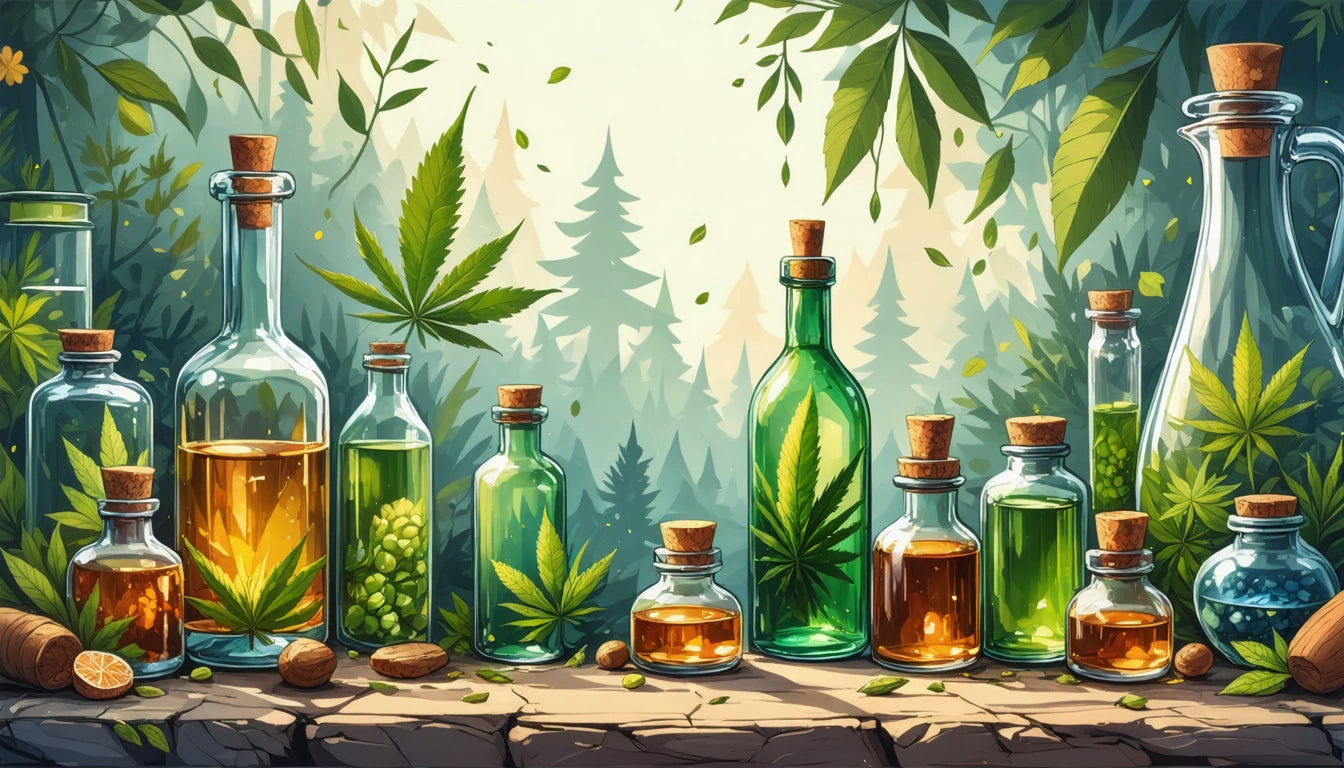Table of Contents
Selecting appropriate packaging materials for cannabis products requires balancing multiple factors including compliance, product preservation, brand aesthetics, sustainability, and cost. The right packaging solution protects product integrity while meeting regulatory requirements and reflecting brand values. This guide explores key considerations for choosing optimal cannabis packaging materials across different product categories.
Common Cannabis Packaging Materials: Benefits and Limitations
Each packaging material offers distinct advantages and challenges for cannabis products. Understanding these differences helps brands make informed decisions based on specific product needs.
Glass Containers
Glass remains popular for premium cannabis products due to its inert properties and perceived quality. According to this material comparison guide, glass excels in preserving terpenes and preventing unwanted flavor transfer. However, its weight increases shipping costs and breakage risk.
Plastic Options
Various plastic formulations serve different cannabis packaging needs:
- PET (Polyethylene Terephthalate): Clear, recyclable, and commonly used for vape cartridge packaging
- HDPE (High-Density Polyethylene): Durable, chemical-resistant, suitable for concentrates
- PP (Polypropylene): Heat-resistant, often used for child-resistant closures
Understanding material grades and specifications helps ensure compatibility with your specific product type.
Mylar and Flexible Packaging
Mylar bags provide excellent barrier properties against moisture, light, and oxygen. Their lightweight nature reduces shipping costs, while custom printing options enhance brand visibility. For pre-rolls specifically, many brands are moving toward custom-printed cones and tubes that combine protection with distinctive branding elements.
Regulatory Considerations for Cannabis Packaging Materials
Compliance requirements significantly influence material selection for cannabis packaging. Child-resistance capabilities, food-grade certifications, and opaque options for light-sensitive products are mandated in most markets.
Child-Resistant Mechanisms
CPSC and ASTM testing standards verify that packaging materials can resist child access while remaining accessible to adults. Different materials accommodate various child-resistant mechanisms:
- Rigid plastics: Push-and-turn caps, squeeze-and-pull designs
- Flexible materials: Zipper locks with additional barriers
- Glass: Compatible with certified child-resistant closures
Food-Grade Requirements for Edibles
Food-safe material certification is essential for edible cannabis products. FDA-approved materials prevent contamination and harmful chemical migration into consumable products.
Material Impact on Product Integrity and Shelf Life
Different cannabis products require specific protective properties from their packaging materials to maintain potency and freshness.
Barrier Properties
Effective cannabis packaging must protect against:
- Oxygen exposure: Causes cannabinoid degradation
- UV light: Accelerates THC breakdown
- Moisture: Promotes mold growth
Heat resistance and light protection are particularly important for preserving terpene profiles and potency.
Weight and Transportation Considerations
Material weight directly impacts shipping costs and carbon footprint. This analysis of material impact on logistics shows how lightweight options like mylar can reduce transportation expenses by up to 30% compared to glass alternatives.
Sustainability Options in Cannabis Packaging
As environmental concerns grow, sustainable packaging materials are gaining traction in the cannabis industry.
Biodegradable and Compostable Alternatives
New materials entering the market include:
- Hemp-based plastics
- PLA (Polylactic Acid) derived from corn starch
- Recycled ocean plastics
Sustainable alternatives guide provides insights into emerging options that reduce environmental impact while maintaining necessary protective properties.
Recyclability Considerations
Material recyclability varies significantly across regions. Clear communication about proper disposal methods helps consumers participate in sustainability efforts. Single-material packaging generally offers better recyclability than multi-layer composites.
Material Selection Strategy: A Decision Framework
When evaluating packaging materials for cannabis products, consider these key factors:
- Product type and specific protection needs
- Regulatory requirements in target markets
- Brand positioning and consumer expectations
- Budget constraints and volume requirements
- Sustainability goals and environmental impact
Look for relevant material certifications that validate claims about food safety, child resistance, and environmental attributes.
The optimal packaging material balances protection, compliance, branding, and sustainability while remaining cost-effective at your production scale. As the cannabis industry matures, packaging material innovation continues to address these sometimes competing priorities with increasingly sophisticated solutions.











Leave a comment
All comments are moderated before being published.
This site is protected by hCaptcha and the hCaptcha Privacy Policy and Terms of Service apply.